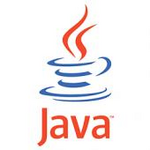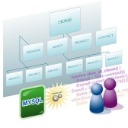Fighting Against Unnecessary Complexity
Friday, May 22nd, 2009
I've been working all day on a single feature for this application at the Shop. It's got potential, but the way in which it's put together just screams 'Unnecessary Complexity', and I, for one, want to put an end to this kind of thing once and for all.
What is it about Java developers that makes them design such systems? What kind? you ask, I'll be glad to explain.
Java, as a langauge, is not evil. It's a tool. No more, no less. It's got a lot of nice features, and just as many limitations. It's not slow, per se, it's just not fast at everything. It's capable, descriptive, and works just fine - as long as you don't ask it to do something it's not meant to do. But that's not the real problem.
The problem, I think, is the way in which Java is evangelized by it's proponents.
Substituting design and planning for scores of small interfaces and "wiring it together" with something like Spring or even the equivalent of the Swing GUI tools, is not the right thing to do. IDEs like Eclipse and the rest allow these developers to put together projects that even they don't understand. This is a real problem.
Case in point. I was working with the author of this package today and asked him where a class was located. I'm a Vim/makefile guy for production software. It's universally available, easily transported, easily used on low-speed lines, and for all these reasons and many more, this is the most efficient toolset I've seen for the complete project lifecycle. So I asked him where the class was so I could load it up in Vim.
He didn't know.
He couldn't remember.
He had to have his Eclipse workarea opened up in order to find this class - that he was clearly very familiar with. After all, he mentioned it to me, and I just asked where it could be found.
This is but one danger - Package Explosion. Dozens of packages that have no reason to exist. He would be far far better served by simply thinking about the project and then laying out a few, well thought out packages and placing his code in these. Having this overly complex package layout is unnecessary, and while it's easy to use in Eclipse, it's a pain even to the developer that created it.
If I could pass these ideas on to this developer, I would. Sadly, he's likely too old to change his ways as he's a strong proponent of this type of development. However, in the hopes that someone someday might read this, here are a few pointers for coding that I've found exceptionally helpful over the years.
- If you can't remember where you put it, the structure is too complicated.
- If you require an IDE, then the project is poorly laid out and too complicated.
- Simplify, simplify... the best designs are the simplest.
I don't think this is exhaustive, but if you can stick to these few rules, you'll be far better off than what I've been dealing with all day. Holy Cow.







